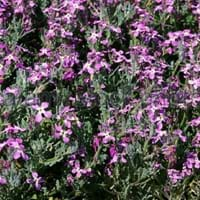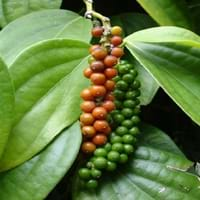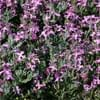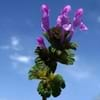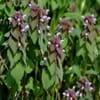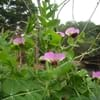Life Span
Annual and Perennial
Perennial
Type
Herbaceous Perennial
Broadleaf Evergreen, Vines
Origin
Northwestern United States, California, Canada
India, Indonesia, Southeast Asia, Southern Asia
Types
Stock, Tenweeks stock, Gillyflower, Brompton Stock
Red pepper, Orange pepper
Number of Varieties
Not Available
Habitat
Cultivated Beds
Moist Soils, orchards, Temperate Regions
USDA Hardiness Zone
5-9
8-15
AHS Heat Zone
12 - 1
12 - 1
Sunset Zone
1a, 1b, 2a, 2b, 3a, 3b, 4, 5, 6, 7, 8, 9, 10, 11, 12, 13, 14, 15, 16, 17, 18, 19, 20, 21, 22, 23, 24
H1, H2, 8, 9, 14, 15, 16, 17, 18, 19, 20, 21, 22, 23, 24
Habit
Upright/Erect
Clump-Forming
Minimum Width
Not Available
Flower Color
Light Blue, Lavender, Blue Violet
Lemon yellow
Flower Color Modifier
Bicolor
Bicolor
Fruit Color
Not Available
Red, Green, Light Green
Leaf Color in Spring
Green
Light Green, Dark Green
Leaf Color in Summer
Green
Light Green
Leaf Color in Fall
Green
Light Green, Dark Green
Leaf Color in Winter
Light Green
Light Green, Dark Green
Leaf Shape
Oblanceolate , Ovate
Circular cordate
Plant Season
Spring, Summer
Spring, Summer, Fall, Winter
Sunlight
Full Sun
Full Sun, Partial Sun, Partial shade
Growth Rate
Very Fast
Fast
Type of Soil
Loam, Sand
Loam, Sand
The pH of Soil
Acidic, Neutral, Alkaline
Acidic, Neutral, Alkaline
Soil Drainage
Well drained
Average
Bloom Time
Late Spring, Early Summer, Summer, Late Summer
Not Available
Tolerances
Drought
Drought
Where to Plant?
Container, Ground
Container, Ground
How to Plant?
Seedlings
Seedlings, Stem Planting, Vegetative Reproduction
Plant Maintenance
Medium
Medium
Watering Requirements
Requires regular watering
Do Not over Water, Sprinkle water over foliage, Water every two or three days during warmer months
In Summer
Lots of watering
Lots of watering
In Spring
Moderate
Moderate
In Winter
Average Water
Average Water
Soil pH
Slightly Acidic
Acidic, Neutral, Alkaline
Soil Type
Sandy
Loam, Sand
Soil Drainage Capacity
Not Applicable
Average
Sun Exposure
Full Sun, Partial Sun
Full Sun, Partial Sun, Partial shade
Pruning
Remove damaged leaves, Remove dead branches, Remove dead leaves
A hard prune may be necessary if the plant becomes woody, Remove dead branches, Trim each shoot back to the first set of leaves
Fertilizers
All-Purpose Liquid Fertilizer
10-10-10 diluted liquid fertilizer, All-Purpose Liquid Fertilizer, Do not let fertilizers touch the leaves
Pests and Diseases
Not Available
Aphids, Beetles, Root rot, Rust, Scab
Plant Tolerance
Drought
Heat Tolerance, Humidity, Salt and Soil Compaction
Flowers
Showy
Not Available
Flower Petal Number
Single
Single
Foliage Texture
Fine
Medium
Foliage Sheen
Glossy
Matte
Attracts
Butterflies
Aphids, Leafminer, Snails, Squirrels
Allergy
Not Available
Oral Allergy
Aesthetic Uses
Not Available
Beautification, Cottage Garden, Decorating walls
Beauty Benefits
Not Available
Acne, Blackheads
Environmental Uses
Air purification
Fixes Nitrogen, Insect Repellent
Medicinal Uses
Antidote, Aphrodisiac, Expectorant, Stomachic
Acid Reflux, Dysentry, Healthy teeth, Inflammation, Oral health
Part of Plant Used
Flowers, Leaves, Seedpod
Dried seeds
Other Uses
Used as a dye
Culinary use, Oil is used for aromatherapy, Used in herbal medicines
Used As Indoor Plant
No
Yes
Used As Outdoor Plant
Yes
Yes
Garden Design
Not Available
Container, Feature Plant, Hedges, Screening / Wind Break, Tropical
Botanical Name
Matthiola incana
Piper nigrum
Common Name
Blue Thimble Flower, Field Gilia, Gillyflower
Peppercorn, Piper, Black pepper
In Hindi
gillyflower
काली मिर्च
In German
Garten-Levkoje
Pfeffer
In French
Gillyflower
Piper nigrum
In Spanish
Gillyflower
Poivrier noir
In Greek
Gillyflower
μαύρο πιπέρι
In Portuguese
Matthiola incana
Pimenta-preta
In Polish
Gillyflower
Pieprz czarny
In Latin
Matthiola incana
nigrum piperis
Phylum
Magnoliophyta
Magnoliophyta
Class
Magnoliopsida
Magnoliopsida
Order
Capparales
Piperales
Family
Polemoniaceae
Piperaceae
Clade
Angiosperms, Asterids, Eudicots
Angiosperms, Monocots
Tribe
Gilieae
Not Available
Subfamily
Polemonioideae
Not Available
Number of Species
Not Available
Not Available
Season and Care of Gillyflower and Black pepper
Season and care of Gillyflower and Black pepper is important to know. While considering everything about Gillyflower and Black pepper Care, growing season is an essential factor. Gillyflower season is Spring and Summer and Black pepper season is Spring and Summer. The type of soil for Gillyflower is Loam, Sand and for Black pepper is Loam, Sand while the PH of soil for Gillyflower is Acidic, Neutral, Alkaline and for Black pepper is Acidic, Neutral, Alkaline.
Gillyflower and Black pepper Physical Information
Gillyflower and Black pepper physical information is very important for comparison. Gillyflower height is 38.10 cm and width 20.30 cm whereas Black pepper height is 180.00 cm and width Not Available. The color specification of Gillyflower and Black pepper are as follows:
Gillyflower flower color: Light Blue, Lavender and Blue Violet
Gillyflower leaf color: Green
Black pepper flower color: Lemon yellow
- Black pepper leaf color: Light Green and Dark Green
Care of Gillyflower and Black pepper
Care of Gillyflower and Black pepper include pruning, fertilizers, watering etc. Gillyflower pruning is done Remove damaged leaves, Remove dead branches and Remove dead leaves and Black pepper pruning is done A hard prune may be necessary if the plant becomes woody, Remove dead branches and Trim each shoot back to the first set of leaves. In summer Gillyflower needs Lots of watering and in winter, it needs Average Water. Whereas, in summer Black pepper needs Lots of watering and in winter, it needs Average Water.
